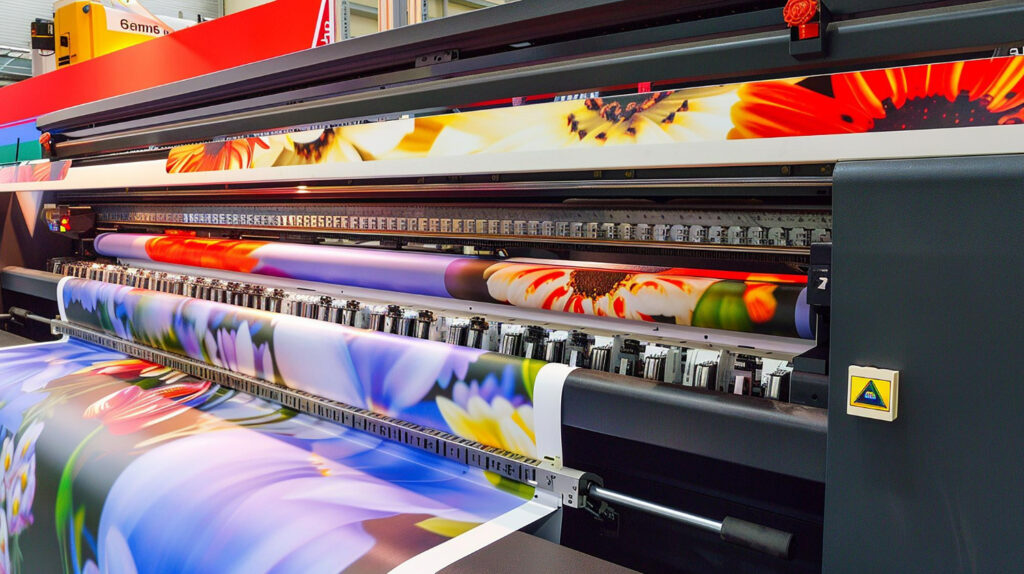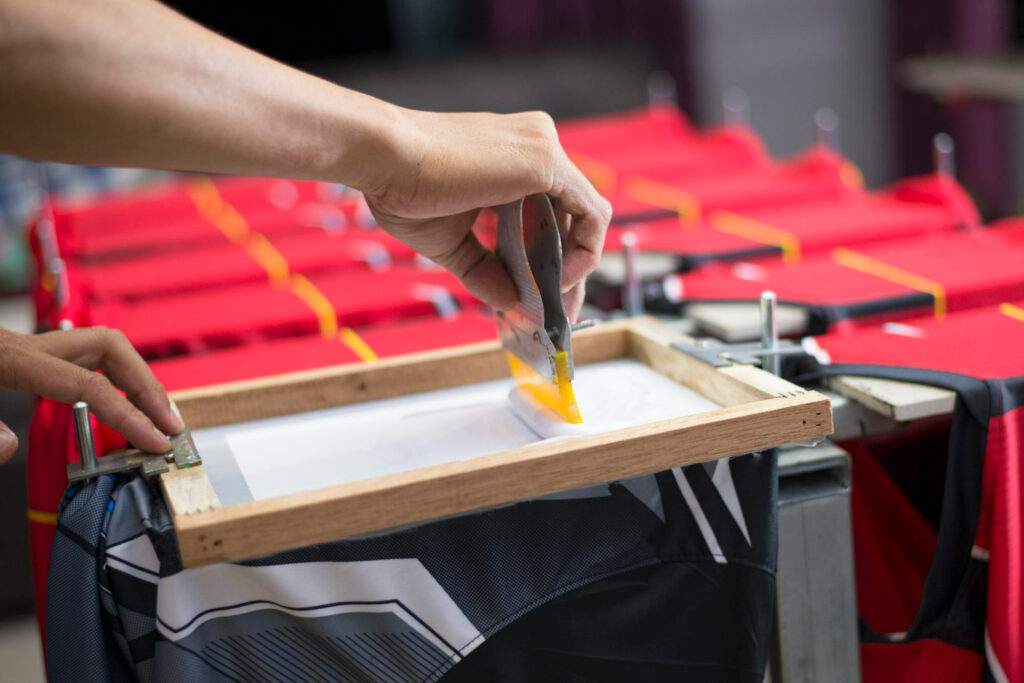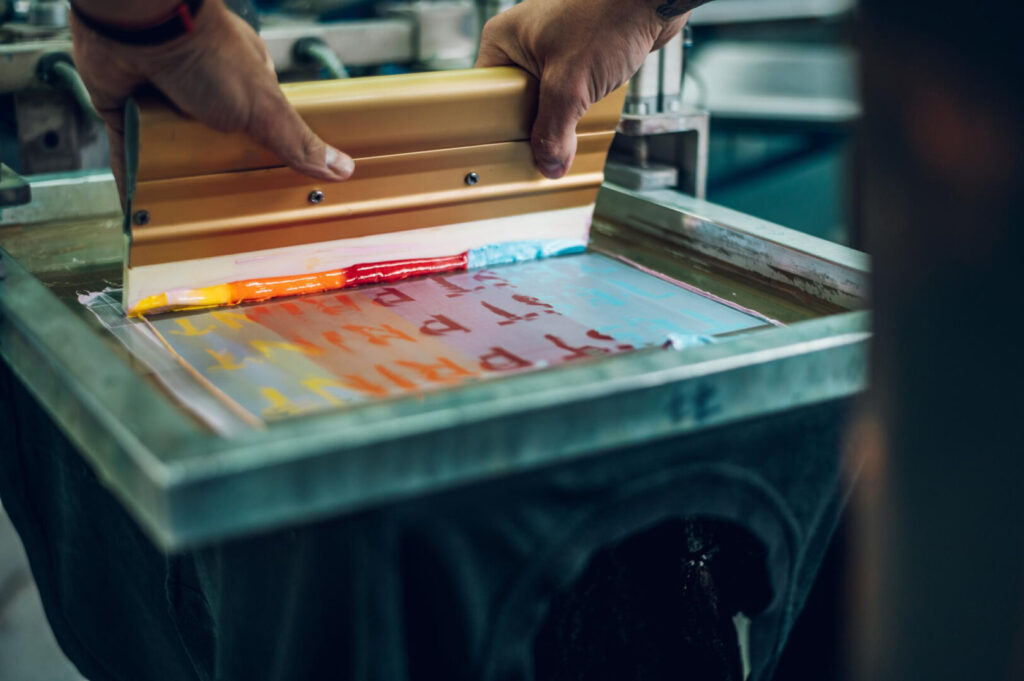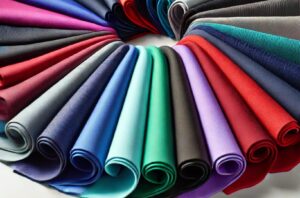Introduction
You’ve likely seen the handiwork of screen printing in your daily life—those vibrant t-shirts at a concert, the eye-catching displays and banners at events, or the custom-made tote bags from your favorite brand.
This method is a ubiquitous technique, heralded for its versatility, durability, and high-quality output. But what exactly is it, and why should you consider it for your next branding or creative project?
This in-depth guide will provide a deep dive into the world of screen printing. From its ancient origins to its modern-day applications, we’ll explore how the process works, why it’s so popular, the advantages it holds over other printing methods, and much more.
What is Screen Printing?
Screen printing, also known as silk screening, is a printing technique that involves transferring a design onto a substrate (such as fabric, paper, wood, glass, or metal) using a mesh screen, ink, and a squeegee.
Step-by-Step: The Screen Printing Process
- Design Creation: The process starts with a design, either digitally created or hand-drawn.
- Screen Preparation: A mesh screen is prepared with a light-sensitive emulsion, and the design is placed on top.
- Exposure: The screen is exposed to UV light, hardening the emulsion and creating a stencil of the design.
- Printing: Ink is pushed through the mesh screen using a squeegee onto the material, transferring the design.
- Curing: The ink is then cured using heat or air drying, making it durable and long-lasting.
Advantages of Screen Printing
Now that we’ve covered the basics, let’s delve into the compelling advantages that make this method a go-to technique for professionals and hobbyists alike.
1. High-Quality Results
One of the key advantages of this printing technique is its high quality. It deeply saturates the colors, allowing them to withstand repeated washing and use without fading.
2. Cost-Effective for Large Runs
Screen printing involves initial setup costs, but once that’s done, each additional print is relatively inexpensive, making it an economical choice for large production runs.
3. Versatility
You can screen print on a wide variety of materials, from fabrics like cotton and polyester to non-fabric materials like wood, glass, and metal.
Screen Printing vs. Digital Printing
Digital printing is another popular method, particularly suited for small runs and complex multi-colored designs. While it offers advantages like quicker turnaround and lower setup costs, it doesn’t quite match the vibrancy and durability that screen printing offers.
Digital printing generally limits itself to fabric substrates, while screen printing works on a much wider array of materials.

Use Cases for Screen Printing
Next on our journey through this printing technique is figuring out when it’s the right choice for your project. Are you printing t-shirts for a big event, or perhaps creating custom tote bags? Knowing the ideal situations for using this method can help you get the best results. Let’s dive into some examples that make this technique a winner.
- Branded Merchandise: Apparel like T-shirts, hoodies, hats, and other apparel are often screen printed to maintain quality and vibrancy.
- Artistic Prints: Limited edition prints and artistic canvases can benefit from the high-quality output.
- Team Jerseys: Customized sports apparel like team jerseys benefit greatly from screen printing’s ability to apply thick, durable layers of ink.
- Promotional Materials: Banners, signs, and other promotional items can be produced en masse cost-effectively.
Materials You Can Screen Print On
Now that we’ve tackled the ideal situations for this method, let’s broaden our horizons by discussing the various materials you can work with.
Believe it or not, it isn’t just for t-shirts! From textiles to wood and even glass, the versatility of this technique is one of its greatest assets. Keep reading to discover the surprising range of materials that can transform under the screen printer’s touch.
- Textiles: Cotton, polyester, silk, and blends
- Paper and Cardstock: Posters, cards, and artistic prints
- Metal: Signs, labels, and equipment
- Glass: Bottles, decorative items, and awards
- Wood: Furniture, decorative pieces, and signs
By understanding these ideal use cases and materials, you can make an informed decision about whether this technique is the right method for your apparel.

Key Takeaways
- It offers high-quality, vibrant, and durable results.
- It is particularly cost-effective for large production runs.
- It can be used on a diverse range of materials, making it ideal for various applications, from branded merchandise to fine art.
Is Screen Printing Right for You?
If you’re looking for a printing technique that delivers vibrant, long-lasting results and offers versatility across a wide range of materials, this method might be the perfect fit for you.
Whether you’re a business looking to produce branded apparel, an artist looking to create high-quality prints, or simply someone wanting to create memorable merchandise for an event, this method offers an array of advantages that are hard to ignore.
Sphere Sport is a sportswear & sports uniform manufacturer based in China. We specialize in serving teamwear brands in the US, Australia, and the UK.
Contact us today about any of your sports apparel manufacturing needs.






